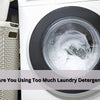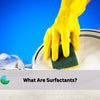What Does Eco-Friendly Really Mean?
- by Matthew Agustin
The Difference Between Eco-Friendly and Sustainable Practices

Eco-friendly and sustainable are terms often used interchangeably, but they have key differences. Eco-friendly practices focus on reducing harm to the environment in the present. On the other hand, sustainable practices consider the long-term impact, ensuring that our actions today don’t compromise the needs of future generations. Sustainable products aim to balance environmental, social, and economic factors over time.
The United Nations describes sustainability as “meeting the needs of the present without compromising the ability of future generations to meet their own needs”. This idea is at the heart of sustainability and shows how it goes beyond just being eco-friendly. While both focus on protecting the environment, sustainability is about planning for the long term. It ensures that our resources and communities stay strong and healthy for years to come. (Source: United Nations on Sustainability)
How Eco-Friendly Products Contribute to a Sustainable Lifestyle
You can be sustainable by choosing eco-friendly products that not only reduce immediate harm to the environment but also have a lasting positive impact. When you use products that conserve resources, minimize waste, and avoid harmful chemicals, you're supporting a healthier planet both now and in the future. By opting for eco-friendly items that are made to last, use sustainable materials, and can be recycled or reused, you contribute to a lifestyle that balances current needs without compromising the well-being of future generations.
Understanding Greenwashing: How to Avoid Misleading Claims

Greenwashing is when companies make their products seem more eco-friendly than they really are. They might use labels, colours, or words like "natural" or "green" to give the impression that their products are good for the environment. However, these claims can be misleading. For example, a plastic bottle might have a green label and say it uses "less plastic," but it’s still not truly eco-friendly. Another common example is when companies promote “all-natural” products that are made with harmful chemicals during production.
To avoid being misled by greenwashing, it’s important to look for specific details and verified certifications. Don’t just trust a product because it has a green label or claims to be “eco-friendly.” Instead, check for certifications from trusted organizations like the USDA Organic, Fair Trade Certified, or the Forest Stewardship Council. These certifications mean the product has been thoroughly evaluated and meets strict environmental standards.
Consumers can also spot greenwashing by being cautious of vague or overly broad claims. If a product says it’s “eco-friendly” or “sustainable” without explaining how, that’s a red flag. Look for clear information on the product’s packaging about why it’s better for the environment. Understanding these tactics can help you make informed choices and support brands that are truly committed to sustainability.
Eco-Friendly Packaging: How to Opt for Minimal Environmental Impact
Packaging is often overlooked, but they do have a big impact on the environment. When products come in too much plastic or other non-recyclable materials, it creates more waste and pollution. You can help by choosing products with simple, eco-friendly packaging. Look for things wrapped in recycled cardboard or biodegradable materials. These choices cut down on waste and use resources that can be replaced. Picking products with better packaging is an easy way to help the planet and live more sustainably.
The Role of Reusable Products in a Sustainable Lifestyle
- Encourage the use of reusable products as a key aspect of living sustainably.
- Highlight examples of how reusable products reduce waste and contribute to eco-friendly living.
Choosing Environmentally-Friendly products for cleaning!

Every day, we use products like detergents and cleaners for our daily chores. Whether it’s washing dishes, doing laundry, or cleaning the bathroom, these are tasks we all do regularly. The choices we make in these everyday products can have a big impact on the environment. The more people switch to eco-friendly options, the greater the positive effect we can have on the planet. Choosing products that are sustainably sourced and free from harsh chemicals not only helps the environment but also makes our homes healthier. It’s a small change that can lead to big results over time.
We at Lucent Globe offer several options that are both gentle on the planet and effective:
- Dishwashing Sheets: These dissolve quickly in water and use fewer chemicals, with no harsh additives or other nasties. They also come in minimal packaging.
- Laundry Sheets: Lightweight and compact, they reduce waste and cut down on transport emissions. Plus, they’re free from harsh chemicals.
- Toilet Cleaning Sheets: Easy to use and septic-safe, these sheets contain no harsh chemicals and break down easily, making them safe for the environment.
- Fabric Softeners: These sheets soften clothes without bulky plastic bottles and avoid harmful chemicals, reducing plastic waste and protecting your health.
Making Environmentally-Friendly Choices: How to Live Sustainably
Living sustainably starts with making smart choices about the products we buy. It’s important to do a little research and support brands that truly prioritize being environmentally friendly.
The choices we make as consumers can drive big changes in the market. When more people choose environmentally friendly products, it pushes companies to offer more sustainable options. This shift not only helps reduce waste but also lessens the overall impact on the environment. By being mindful of what we buy, we can all play a part in creating a healthier planet for future generations.

 Dishwashing
Dishwashing Laundry
Laundry Bundles
Bundles Surfaces
Surfaces Toilet
Toilet Handsoap
Handsoap Multi-Purpose
Multi-Purpose Floor
Floor




